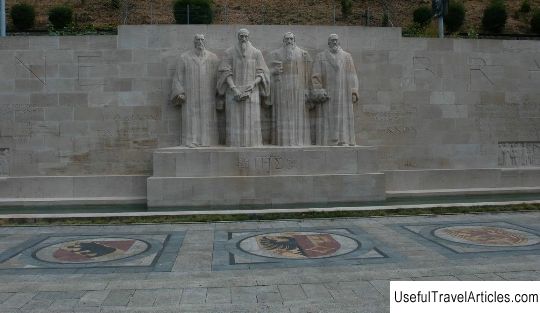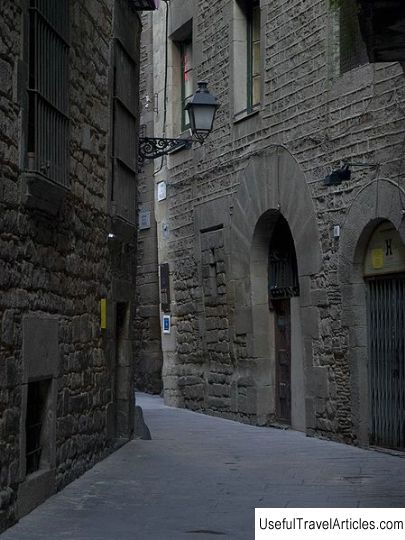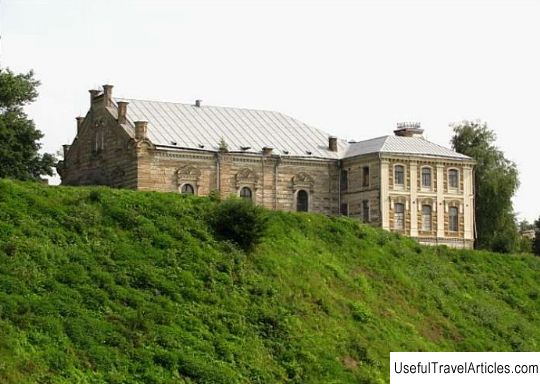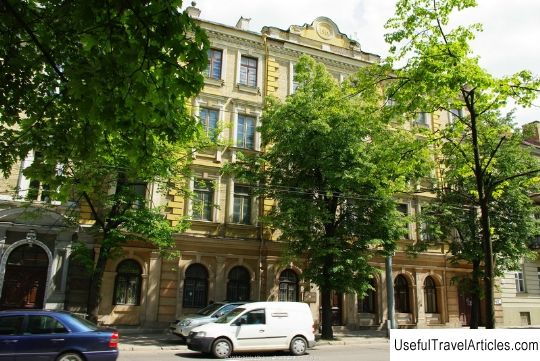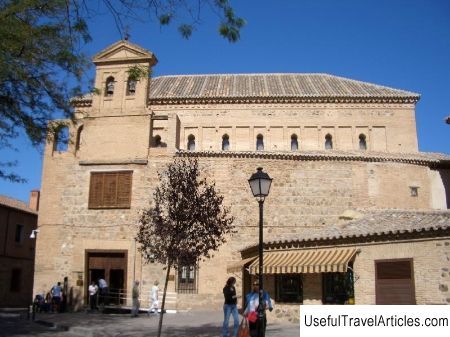Choral synagogue (Vilniaus sinagoga) description and photos - Lithuania: Vilnius
Rating: 7,5/10 (100 votes) 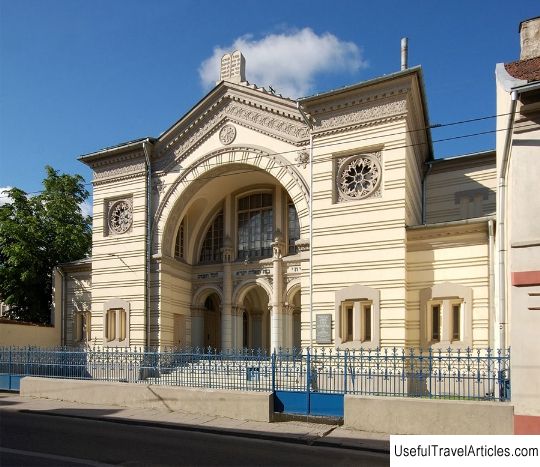
Choral synagogue (Vilniaus sinagoga) description and photos - Lithuania: Vilnius. Detailed information about the attraction. Description, photographs and a map showing the nearest significant objects. The name in English is Vilniaus sinagoga. Photo and descriptionJews appeared in Vilna at the beginning of the 15th century, but the Jewish community began its activity only in 1593. It was then that Sigismund III granted Jews the privilege of living in Vilno. In 1830-40, the Jewish educational movement "Haskala" spread in Vilnius. Already in 1820-30, the first secular editions were published - history textbooks, which were translated by the Haskalah writer Mordechai Aaron Gunzburg and poetry collections of Abraham Dov Lebenson. Jewish students were enrolled in the gymnasium in Vilnius. In 1846, when M. Gintsburg was buried, the Haskala adherents decided that they needed to found a synagogue so that they would have their own meeting room. Vilnius authorities supported the initiative of Jewish educators, and in 1847 permission was given to open a synagogue. It was called "Taharat Hakodesh", which means the cleansing of the shrine. The temple had an orthodox orientation, but modeled on the German synagogues, in which, at that time, the creation of Reform Judaism, all rituals were carried out using the choral singing. For this reason, the synagogue was called Choral. During the 19th century, the synagogue operated in different premises, but did not have its own building. In 1899, the synagogue board bought a plot of land on Zavalnaya Street that had previously belonged to the merchant V. Eliyashberg. By 1902, with the participation of the architect David Rosenhaus, the project of the future synagogue building was created. Construction began and on September 3, 1903, to celebrate the Jewish New Year, its inauguration took place. The grand opening of the synagogue took place with the participation of many prominent people of the era: the historian Simon Dubnov, the cantor Avraham Bernstein and others. In the 19th century the bankers of the Bunimovich family, board member E. Pruzhanas, merchant I. Shabad, architect D. Rosenhaus, public figures S. Trotskis and S. Citron, writers D. Lebenson, A. Meyer Dick, K. Shulman were frequent guests of the synagogue. ... The Vilnius rabbi Zelig Minor possessed a very valuable library, which he bequeathed to the synagogue. For two years, the synagogue was preached by a famous writer, Zionist, Sh. Levin, deputy of the Russian State Duma. Construction of the building the synagogue was executed with elements of the Moorish style. The exterior facade of the building is impressive with a high arch supported by two interior columns. The arch contains two side windows with niche-shaped openings. In the upper part above the entrance there is a large stained glass window in the shape of a semicircle. At the bottom of the large arch, two inner columns form three smaller arched openings. The interior of the synagogue is sustained in the same smooth lines of walls and columns, interconnected with soft arched lines. On the second floor, a special room was set aside for choirs and for the women's department. Of the more than one hundred Jewish prayer houses that operated in Vilnius at the beginning of the 20th century, only a few survived after World War II. One of them is the Takharat Hakodesh synagogue. During the development of independent Lithuania, the synagogue was restored. Famous cantors began to come here very often to participate in the general singing. One of them is the well-known modern cantor I. Malovan. He was even awarded the title of Honorary Cantor of the Choral Synagogue in Vilnius.    We also recommend reading Tomb of Napoleon (Tombeau de Napoleon) description and photos - France: Paris Topic: Choral synagogue (Vilniaus sinagoga) description and photos - Lithuania: Vilnius. |
